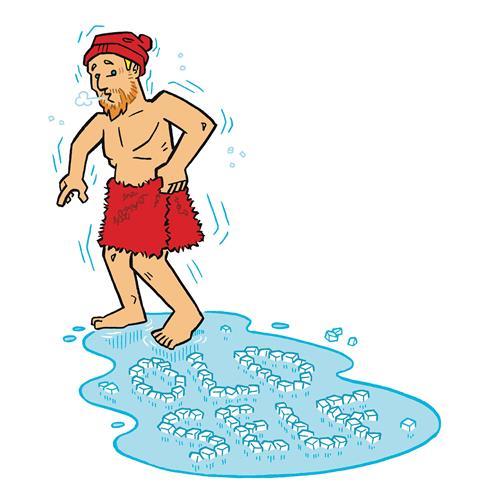Rend Collective’s Chris Llewellyn has been having ice cold baths every morning. It’s got him thinking about the meaning of baptism

If you visited my Tennessee garden in the early hours of the morning, you would be greeted by the sound of chirping birds, a distant banjo riff drifting across from my neighbour, and a large Northern Irish land mammal in distress.
Yes, I have joined the movement of masochistic wellness enthusiasts who greet the day by getting into a tub of ice-cold water in the hope that it will elicit not just colourful language and blue-skinned discomfort but numerous health benefits.
Proponents of the plunge claim it aids body composition, burning calories as your body fights to not die a Leonardo DiCaprio in Titanic-style hypothermic death, as well as swapping bad white fat (the kind we poke at in the mirror) for better brown fat (the kind no one sees at all). It also lowers blood pressure and inflammation.
But truthfully, it was the promise of mental health benefits, not physical ones, that had me partaking in this bizarre practice and stocking up on ice – a rush of dopamine and adrenaline from activities that wouldn’t land me in prison.
The first moments were agony. Two minutes of stabbing pain. My breathing responding like a panic attack. But then came a kind of peace and surrender to the process. I got out of the tub in my “fun mode”, euphoric and irritatingly chipper, despite the early hour.
I went into the water pretty lifeless. I emerged a different person. It was a baptism of sorts.
I never really connected emotionally with my own baptism. It just felt like something I had to do; an initiation rite into Christianity. The most memorable part was that I forgot spare trousers and so had to leave church a soggy wet mess.
Most of the verses in the New Testament about baptism command it as a component of belonging to the body of Christ (such as Matthew 28:19) but there isn’t an abundance of information as to why. I was baptised as an act of obedience and because I wanted to emulate the example of the baptised Jesus but my understanding didn’t go much deeper than that.
I now realise that baptism represents a cleansing. John’s baptism was “a baptism of repentance” (Mark 1:4), a washing off of old negative patterns that prepares us for a fresh life in Christ. Some scriptures draw a connection to the resurrection (Romans 6:4); we are “buried” in the water and break the surface full of new life. It’s a dress rehearsal for our future resurrection.
The Holy Spirit is also mysteriously involved in baptism. We see that manifested when the Spirit descends “like a dove” on Jesus after he is baptised by John in the river Jordan (Matthew 3:16). I think it’s this facet that excites me the most – the idea that the person of the Holy Spirit, a dynamic driving force behind the Church, is present with and in me.
So, each morning as I go yelping into the depths of my ice bath, I imagine my weary soul being submerged in his Spirit again. That the energy and vitality coursing through my body is Christ, activating and refreshing me for the day ahead – the life ahead. And then I get out a shivering son, with whom he is well pleased.
Maybe it’s time to throw a little ice in the baptismal tank.





































No comments yet